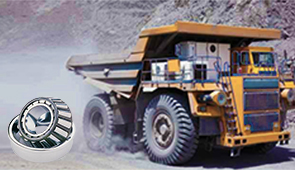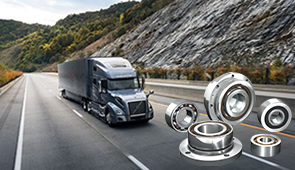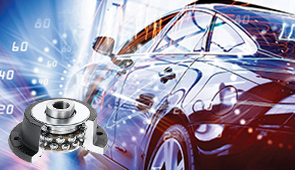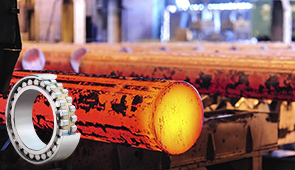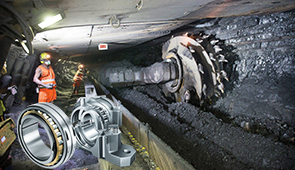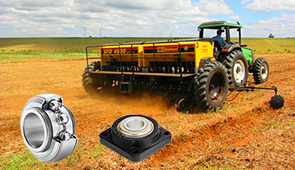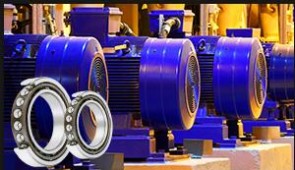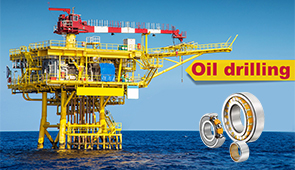Ultimate Guide: Rod End Linkage for Enhanced Car Performance and Support
Rod end linkage systems, often referred to as heim joints or spherical rod ends, serve as critical components in automotive applications, particularly in performance and racing vehicles. These precision-engineered elements are designed to provide a reliable connection between mechanical parts while ensuring smooth motion transfer and exceptional strength under stress. This guide will examine the fundamental characteristics of rod end linkages, their role in improving vehicle dynamics, and the factors to consider when choosing the right configuration for your application. Whether you’re an automotive enthusiast upgrading a race car or a technician seeking optimal performance solutions, this comprehensive breakdown will offer detailed insights into how rod end linkages enhance car maneuverability, stability, and overall functionality.
What is a rod end linkage and how does it work?
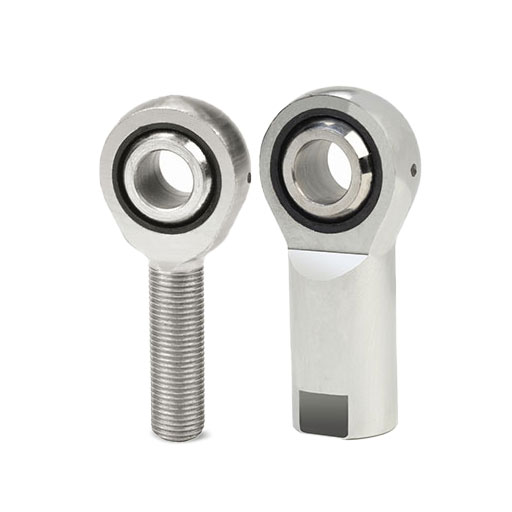
Understanding the components of rod end linkages
Heim joints or spherical rod ends, also known as rod end linkages, are mechanical joints utilized in various industries that need accurate movement and load handling. These assemblies consist of major parts such as the housing, bearing, and an optionally included threaded shaft.
- Rod End Housing: The outer shell made of robust materials like carbon steel or even aluminum encases the bearing and acts as a load-bearing element. The material needs careful selection due to its influence on structural strength, longevity, and load-bearing abilities.
- Spherical Bearing: The centerpiece, or spherical bearing, provides the freedom of multi-axis movement while also remaining true to the load alignment. There are rehearsed bearings that use coated aluminum alloys made of hardened steel, or stainless steel. The essential features include a dynamic load rating (for instance, kN), and misalignment tolerance (also known as degrees).
- Threaded Shaft: Male or female threaded shafts help deal with length alteration in the linkage system which translates over to easier use. As always, when it comes to deployment there are notable essential features which include thread size and pitch.
The addition of these components enhances the utility of rod end linkages in systems with sophisticated motion control requirements and the ability to transfer both static and dynamic loads. The material properties and dimensional tolerances of each component must correspond to the application’s technical requirements to ensure optimal performance under all operating stresses.
How rod end linkages enhance vehicle control
Rod end linkages facilitate articulation and motion transfer between steering and suspension parts which improves vehicle control. They also sustain smooth operation during the misalignment of components under high-stress situations. For instance, the construction of rod ends assists in rotation and angulation movements while control over the vehicle on rough surfaces or rapid actions is essential.
- Thread size and pitch: Determines connection compatibility as well as the transmission efficacy of the applied force.
- Material specifications: High-strength steel alloys or corrosion-resistant materials are commonly used for construction to endure mechanical stresses along with environmental conditions.
- Dimensional tolerances: Ensures better linkage play which maximizes responsiveness and precision.
- Load ratings: Ensures adequately supporting the static and dynamic loads specific to the vehicle application as well as prevents failure under operative strains.
In summary, the cumulative effects of these features enhance handling, stability, and safety which result in the importance of rod end linkages in modern vehicle technology.
How to choose the right rod end linkage for your application?
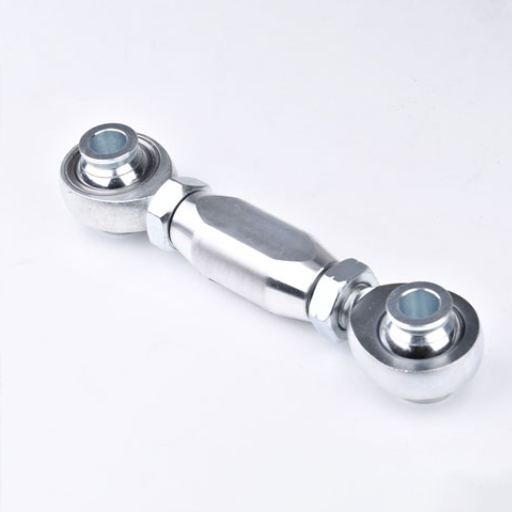
Factors to consider when selecting rod end linkages
For the particular case of my application, the rod end linkages have to meet certain criteria to perform efficiently and with reliability:
- Load Capacity Requirements: Starting with Load Capacity Requirements, I need to analyze static and dynamic force ratings that are purported to be active during the operation. As an example, heavy machine applications will most likely require linkages that have higher ratings in pounds or newtons so that they do not get deformed or fail.
- Material Composition: The specific criteria that I evaluate in the rod end linkages is the material composition in terms of the sought operational demands. In the case of applications that experience corrosion and need ultra-strength, I look for stainless steel or zinc-plated alloy steel.
- Thread Type and Size: The assembly also requires the specification of a particular thread size and shape pitch to construct the assembly. In case the threading is too broad, support is negatively impacted, thus precise threading will eliminate any unnecessary gaps and positively influence stability.
- Angular Range and Misalignment Tolerance: I check the range of angles the linkage can extend to and the extent to which it can misalign during operation. This is especially important for application areas that need to pivot a lot since they would have to have spherical bearings with larger angle ranges.
- Operating Environment: I consider the range of conditions such as damp environments, high and low temperatures, and exposure to chemicals, and select parts with seals or other materials that are resistant to stern conditions to ensure the suitability of the linkage to the environment.
- Flexibility and Accuracy: To sustain activeness while operating, I maintain a suitable tolerance between the rod end and connecting parts which reduces wear and keeps them adequately responsive. I check to see if the appropriate dimensional tolerances are available by looking at the manufacturer’s guidelines.
Through a structured evaluation of these criteria and the manufacturer-defined criteria, I can target rod-end linkages that fulfill my technical and operational needs.
Comparing steel vs. chromoly steel rod end linkages
When comparing steel and chromoly steel rod end linkages, I focus on their material properties, strength-to-weight ratios, and suitability for specific applications. Steel rod end linkages are generally more cost-effective and possess adequate tensile strength for standard applications. However, they are heavier and less resistant to fatigue over time. On the other hand, chromoly steel (an alloy of chromium and molybdenum) offers superior tensile strength, corrosion resistance, and fatigue life while maintaining a lighter weight. corrosion resistance, and fatigue life while being lighter in weight.
- Tensile Strength: The tensile strength of steel rod ends is about 60,000-80,000 PSI while with chromoly steel it can go higher than 90,000 PSI due to variations in alloy grade and heat treatment.
- Weight: Because of using Chromoly instead of regular steel, rod end linkages made from it tend to be 15-25% lighter than standard steel ones.
- Fatigue Resistance: For applications that need reliable durability under cyclic loads, chromoly steel, which has superior fatigue resistance, proves to be favorable.
Based on these characteristics, I would select chromoly steel for applications requiring high strength and durability at a lower weight, such as motorsports or aerospace. For less demanding and cost-sensitive scenarios, steel rod end linkages are typically sufficient.
What are the benefits of using QA1 rod end linkages?
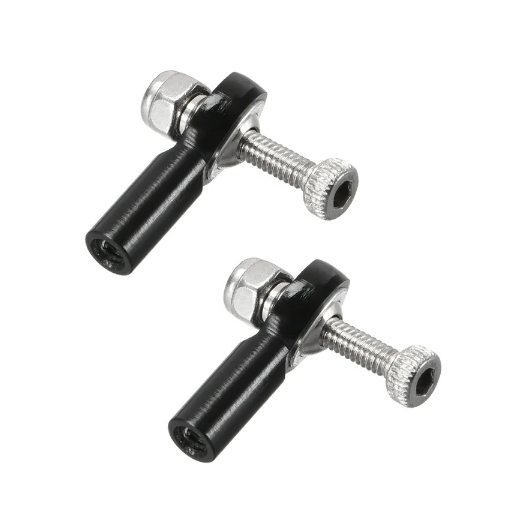
The superior performance of QA1 rod end linkages
- Strength and Durability: QA1 rod ends are manufactured using 4130 chromoly steel. Such high-strength materials ensure that these might sustain heavy loads without undergoing any structural changes.
- Fatigue Resistance: These rod ends are made to operate in environments that include cyclic loads. Withstanding such conditions allows these rod ends to have a longer lifespan.
- Precision and Low Friction: QA1 rod end features are provided with PTFE liners which significantly reduces friction. This loss in energy and wear is lower, providing smooth rotary motion and increasing life.
- Optimized Weight: The use of lightweight and strong materials increases the efficiency of QA1 components, which is important for applications demanding reduction in weight for better results.
- Corrosion Resistance: Many QA1 rod ends include protective coatings, such as zinc plating, to reduce the chances of corrosion in extreme surroundings.
These features make QA1 rod end linkages reliable and result in dependable performance earned and preserve efficiency under difficult conditions.
Unique features of QA1 rod end linkages
QA1 rod end linkages come with multiple distinct features that make them excel in high-performance criteria.
- High Load Capacity: QA1 rod end constructions are designed to support considerable axial and radial forces. QA1 rod ends are manufactured from top-grade materials like chromoly steel or stainless steel, giving them strength under extreme stress conditions. For instance, certain models’ static radial load has a capacity that surpasses twenty thousand pounds making them ideal for certain industrial and motorsport applications.
- Precision Machining: Alongside exceptional quality features, QA1 rod ends are crafted with strict tolerance limits that ensure movement is as accurate and as predictable as it is required to be. For example, ball bore and housing geometry are assured with an accuracy of plus or minus 0.001 inches which guarantees the appropriate fit and friction suppression when being used.
- Versatile Threading Options: To cater to different application needs, QA1 supplies both right-handed and left-handed threads in addition to jam nuts and sleeves with metric and imperial sizes. Available thread pitches go from 1/4-28 UNF to larger measurements such as 1 inch-14 UNEF depending on the needs of the particular design.
- Self-Lubricating Bearings: A lot of models consist of PTFE-containing sleeves that reduce the necessity of continuous greasing as well as the wear and tear in self-lubricating bearings, which is particularly useful for dynamic applications that consist of continuous motion.
QA1 rod end linkages are noted for having excellent durability, consistent efficiency, and adaptability to strict industry requirements because of the technology incorporated into them.
How to install and maintain rod end linkages?
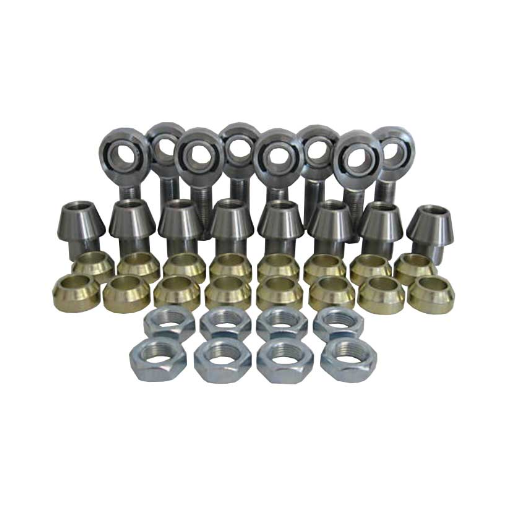
Step-by-step guide for installing rod end linkages
- Select the Appropriate Rod End: The chamfered 3D space features specify the selectable rod end’s thread size, thread pitch, and compatible materials. For instance, a 1/4-28 UNF threaded rod, or even I” – 14 UNEF, should be capable of accommodating the application’s load as well as facilitating motion.
- Prepare the Mounting Surface: The mounting surfaces must also be clean, leveled, and free from clutter for better alignment and to avoid unnecessary wear.
- Align the Rod End: Place the rod end linkage in the alignment of the other components. The rod’s ends should be able to freely rotate during motion without restriction to eliminate stress concentration and deterioration of the rod.
- Secure the Rod End: Repeatedly, confirm that the rod end linkage is threaded into place, and tightened to the needed torque value. Use technical datasheets to acquire correct torque specifications.
- Attach the Mating Components: The rod end should be attached to a load system like a control arm or shaft. Make sure that every nut and bolt are sufficiently tightened to the limitations provided.
- Lubricate in Turns: Use the suggested grease to promote lower friction and was on the rod end in the absence of self-lubricating bearings.
- Examine the Installation: Following installation, the system should be meticulously examined within an operational setting for both proper functionality and alignment.
- employ Periodic Maintenance: Check the rod end linkage system periodically to increase restrain reliability in the long run. Guarantee that the self-lubricating bearings are efficient and remove them in cases of excessive damage.
In ensuring a well-installed and maintained rod-end linkage system, I make sure that they are by industry standards. If a greater degree of precision is necessary, seek the individual bearing manufacturers for their maximum load ratings, temperature tolerances, and material fatigue limits.
Tips for proper maintenance of rod end linkages
- Lubrication: For standard operational rods and linkages having non-self-lubricated bearings, lubrication is required every 500-700 operational hours based on the load and environmental conditions. High-grade grease that is within the manufacturer’s specified operating temperature should be used.
- Monitoring of Load: Excessive loading on the linkage component above the prescribed maximum limit can fail the materials or the system.
- Inspection: Inspect every three months or after a marked operational cycle and check for signs of wear such as deformation, surface corrosion, or excessive joint flexing. Replace parts that have clear signs of fatigue.
- Environmental Control: If the system is being used in extreme environments like 150 C or -40 C, or if the humidity is too high, then installation of seals or protective covers should be made to reduce contact with the contaminants.
- Validation of torque: During the maintenance schedule check that all threaded connections are made with the right torque specifications to ensure that the system remains stable. For example, linking rod ends together using Grade 8 bolts normally requires a torque of 200Nm.
- Alignment Check: Check if the rod end linkage is aligned with the motion axis. Any misalignments can result in unfavorable load distribution which shortens bearing life.
- Component Replacement Guidelines: Rod ends need to be replaced due to wear if they have experienced more than 20% less than the original thickness of the bearing material or any micro-cracks which are prone to propagating and causing sudden failure.
By carefully adhering to these guidelines, the reliability and operational lifespan of rod end linkages can be significantly extended.
Preventing common issues with rod end linkages
To eliminate or minimize the aforementioned problems regarding rod end linkages, I would start by concentrating on the following core practices:
- Apply Sufficient Lubricant Oil: Exhausting the aid lubricant under the set operational conditions would optimally lower friction and lessen wear. As an introduction, high-performing applications should utilize high-temperature synthetic grease for bearings to ensure the grease maintains its consistency and allows the bearing to operate efficiently.
- Monitor the Load Limit: Do not attempt to bear more than what the rod end is designed to facilitate. For example, a bearing that is useful for a dynamic load of 10,000 N should not be operated past that mark as it would lead to the material of the bearing advancing towards failure.
- Check for Misalignment: In attempting to notice some signs of the history of use, the periodic measurement to check for misalignment requires some drawings. Estimations must be conducted in such a way that the diameter of the bearing hole does not appear to be more than the wear requirements. For instance, should the bearing’s original size be 12 mm then anything together with and past the 12.2 mm mark is too worn.
- Use of Proper Threads and Bolts: In no circumstances should hand-tightening threaded connections be done more than the recommended torque ranges provided by the designer. To illustrate: it is some guidance if grade 8 bolts undergo 200Nm of torque to limit it because anything beyond would jeopardize reasonable assembly.
- Substitution of Damaged Components: Components exhibiting signs of micro-cracks, fractures, and material deterioration should be substituted with new ones with higher structural and mechanical integrity. In general, to ensure safety and avoid severe damage, any rod end that has been worn out more than 20% should be replaced. Claiming can be backed up through appropriate measurement by precise electronic calipers or micrometers.
By keeping these issues in check, I make certain the rod end linkages work accurately with a specified increased service life.
What are the industrial applications of rod end linkages?
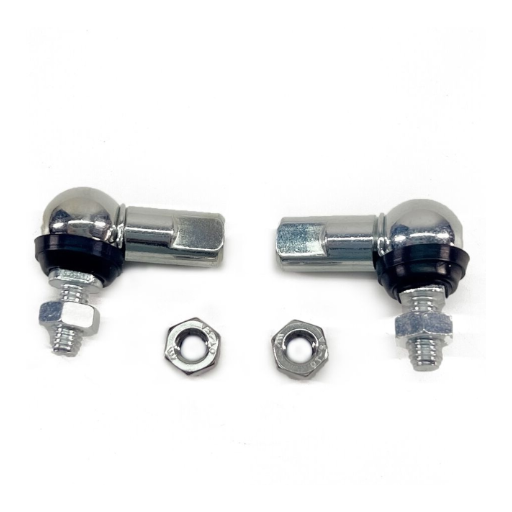
Rod end linkages in the automotive industry
It is no secret that rod end linkages are very important in the automotive field as they allow movement and load transfer for all sorts of mechanical systems. Some of the applications are suspension systems, steering linkages, and throttle controls. These systems permit smooth motion in the components under different conditions of stress. For example, rod end linkages in steering mechanisms ensure proper alignment and control of movement, which aids in good handling control of the vehicle.
- Dynamic Load Capacity: In all other applications of rod ends in vehicles, the dynamic load range that can be resisted is between 5000 N and 25000 N. It is important to note that the value is measured using Newton’s(N) which is a form of metric measurement. The particular rod end’s capacity will depend on the materials used to make it such as chrome-molybdenum steel and stainless steel.
- Ball Joint Hardness: The hardness of a ball joint is also highly relevant because it guarantees the ball can perform under ha igh cyclic load. Hardness values are normally expressed in Rockwell hardness scales such as HRC 55-60.
- Misalignment Angle: Many manufacturers of rod ends define a permissable misalignment angle value between 10°-15° which allows for a combination of complicated movements during operation to be possible.
Selecting rod end linkages with the right technical details guarantees targeted performance and durability under severe automotive uses.
Other industries utilizing rod end linkages
Just as in vehicles, rod ends and linkages are widely used in other fields that require precise movement and high load-carrying capacity. For instance:
- Aerospace Industry: Rod ends of aerospace applications often use titanium or heat-treated steel along with a dynamic load capacity that exceeds 50,000N. These are critical in the flight control systems as well as in the landing gear modules where both extremes of temperature and high cycle loading are encountered.
- Industrial Machinery: Heavy machinery and robotic systems depend on high-speed repetitive motions and misalignment which is accommodated using rod linkages. These rod ends are typically rated for alignment angles of 20° and higher and have a hardness rating of HRC 60+ to resist wear in the industry.
- Agricultural Equipment: Rods used in agricultural machinery such as tractors or plows are made for severe outdoor conditions, so these linkages are designed with a moderate misalignment angle ranging from 10° to 15°, which ensures reliable performance in rugged terrains.
- Marine Applications: Marine environments require rod end linkages to have higher corrosion resistance, therefore, using stainless steel or special coatings. These have load capacities ranging from 10,000N to 20,000N which are suitable for the steering systems and rigging devices.
The selection of appropriately specified rod end linkages concerning the operating environment within these industries ensures improved application efficiency and durability.
Frequently Asked Questions (FAQs)
Q: What are rod end linkages and how do they enhance car performance?
A: Rod end linkages are adjustable components used in automotive suspension and steering systems. They enhance car performance by allowing precise adjustments to alignment, improving handling, and reducing play in suspension components. These linkages and linkage adjusters provide better control and responsiveness, resulting in a smoother driving experience.
Q: Do you provide a video guide on how to install rod end linkages?
A: Yes, we offer a comprehensive video tutorial on our website that demonstrates the step-by-step process of installing rod end linkages. This video guide is designed to help customers understand the installation process and ensure proper fitment for optimal performance.
Q: What types of rod end linkages do you offer in your product line?
A: Our product line includes a variety of rod end linkages, such as spherical rod ends, heim joints, and clevises. We offer both left-hand and right-hand thread options, as well as different materials like steel, stainless steel, and aluminum to suit various applications and budgets.
Q: How do I determine the correct rod end linkage size for my vehicle?
A: To find the correct rod end linkage size, you’ll need to measure the existing linkage or consult your vehicle’s manual. If you’re unsure, please contact our customer support team with your vehicle make, model, and year, and we’ll help you determine the appropriate size and type of linkage for your specific application.
Q: What is your pricing structure for rod end linkages?
A: Our prices vary depending on the type, material, and size of the rod end linkage. You can find detailed pricing information on our website for each product. We strive to offer competitive prices while maintaining high-quality standards. For bulk orders or custom requests, please contact us for a personalized quote.
Q: Do you ship rod end linkages internationally?
A: Yes, we ship our products internationally. Shipping costs and delivery times may vary depending on the destination. Please provide your shipping address during checkout, and our system will calculate the shipping cost and estimated delivery time. For specific information about shipping to your country, feel free to contact our customer service team.
Q: What is your return policy for rod end linkages?
A: We offer a 30-day return policy for all our rod end linkages. If you’re not satisfied with your purchase, you can return the unused product in its original packaging for a full refund or exchange. Please note that custom or modified items may not be eligible for return. Contact our customer service team to initiate the return process.
UCTH213-40J-300 with Setscrew(inch)
CNSORDERNO: Normal-duty(2)
TOGN: UCTH213-40J-300
SDI: B-R1/8
SD: 2 1/2
UCTH212-39J-300 with Setscrew(inch)
CNSORDERNO: Normal-duty(2)
TOGN: UCTH212-39J-300
SDI: B-R1/8
SD: 2 7/16
UCTH212-38J-300 with Setscrew(inch)
CNSORDERNO: Normal-duty(2)
TOGN: UCTH212-38J-300
SDI: B-R1/8
SD: 2 3/8
UCTH212-36J-300 with Setscrew(inch)
CNSORDERNO: Normal-duty(2)
TOGN: UCTH212-36J-300
SDI: B-R1/8
SD: 2 1/4
UCTH211-35J-300 with Setscrew(inch)
CNSORDERNO: Normal-duty(2)
TOGN: UCTH211-35J-300
SDI: B-R1/8
SD: 2 3/16
UCTH211-34J-300 with Setscrew(inch)
CNSORDERNO: Normal-duty(2)
TOGN: UCTH211-34J-300
SDI: B-R1/8
SD: 2 1/8









